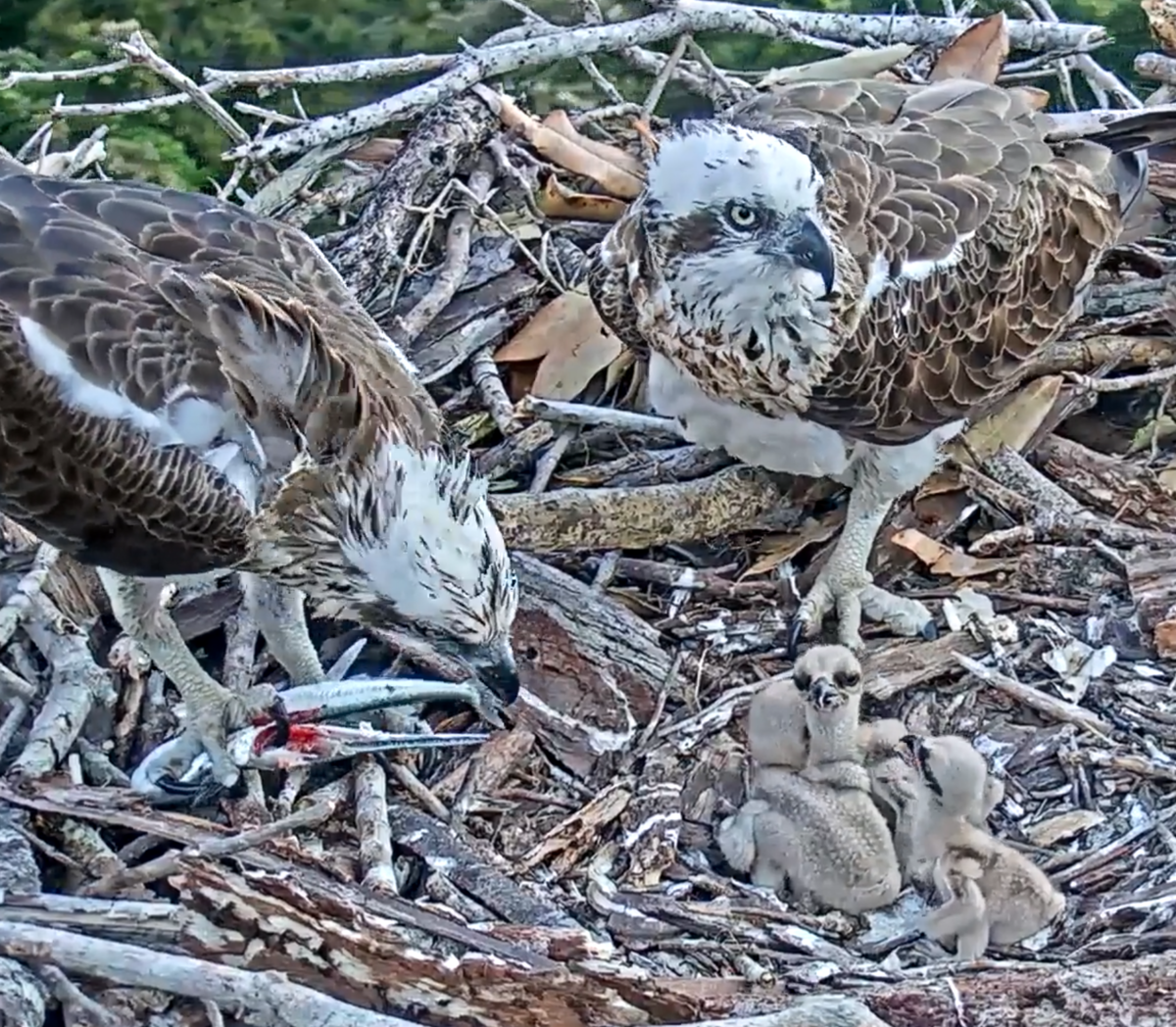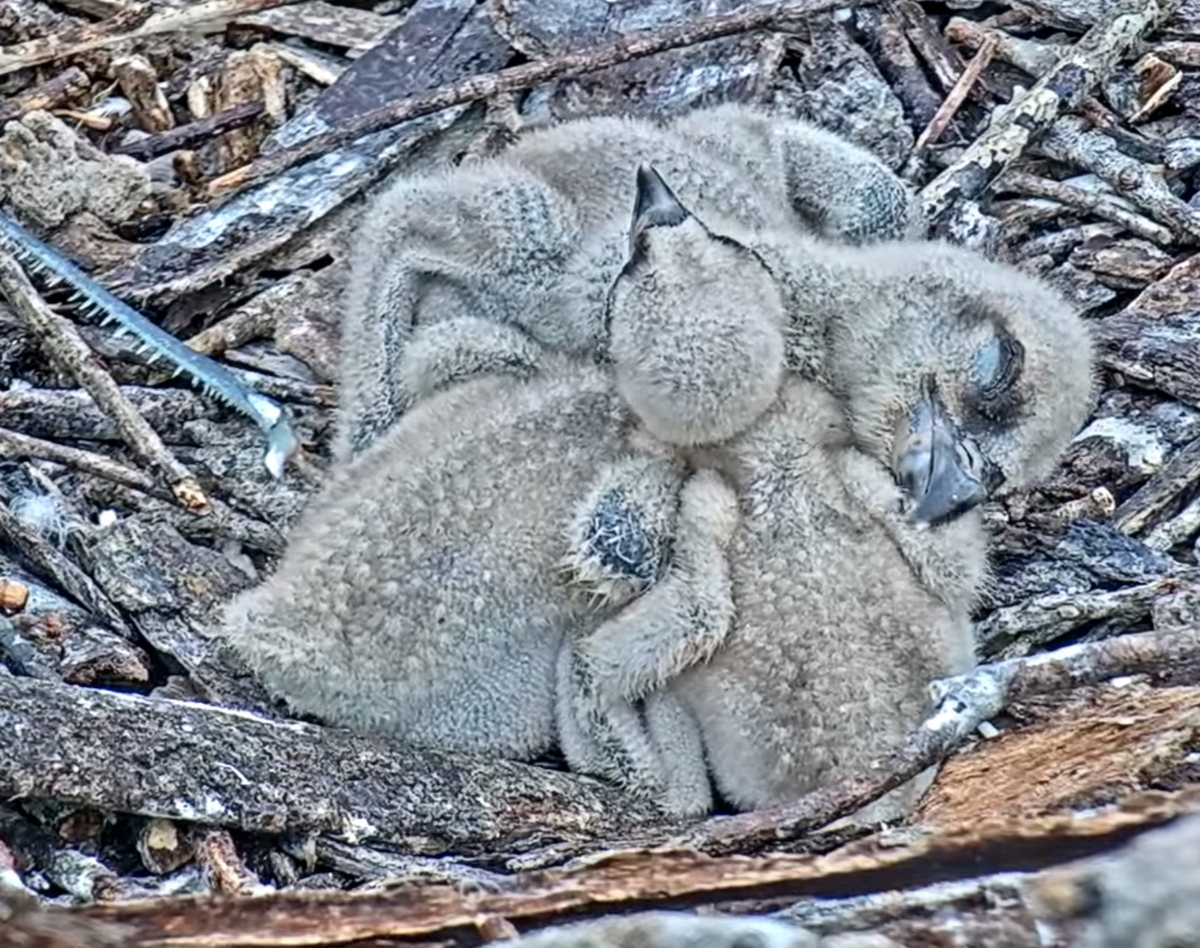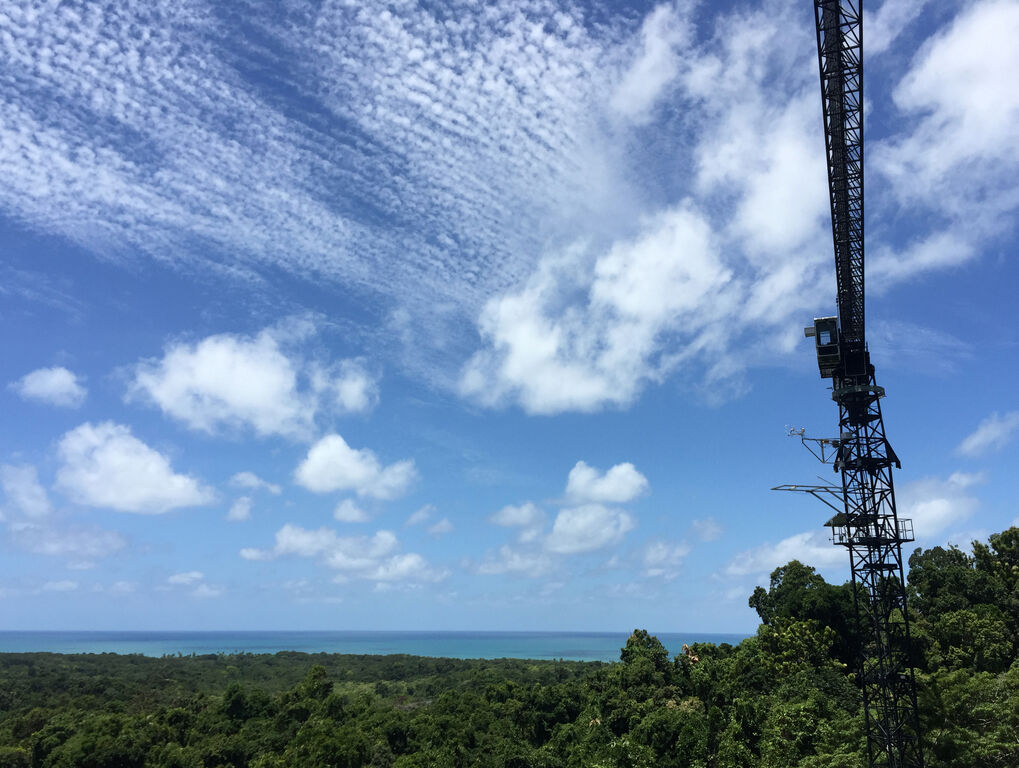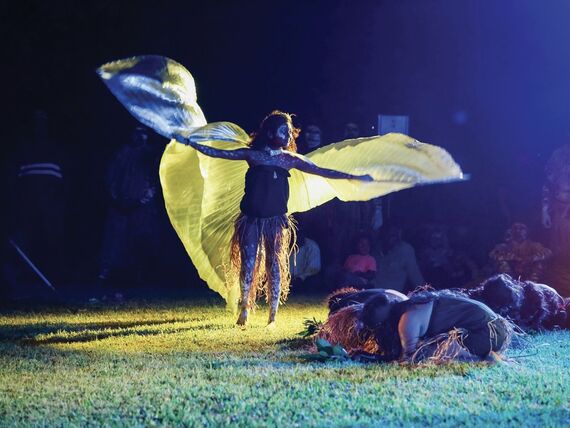
##MainPoints##
Stories of sibling rivalry, struggles to feed a young family and pure survival are emerging from high altitude cameras at James Cook University’s Daintree Rainforest Observatory.
An osprey pair has made the end of the Observatory’s canopy crane jib their nesting place for many years, but for the first time, researchers have been able to view uninterrupted vision of the birds’ daily lives, thanks to new cameras.
Station Manager Dr Michele Schiffer told Tropic Now there was a rush to get the cameras installed in time for this year’s nesting season.
“We have managed to get video clips in the past from the old cameras but it wasn’t reliable so there were lots of glitches and lots of breaks,” she explained.
##ArticleBannerAd##
“Installing cameras at that altitude is not easy because you need people doing high-risk work.
“I was pushing and pushing and pushing because I could tell the nest was being rebuilt.
“It all fell into place so now we are shooting the entire sequence.”
The footage they’ve captured is nothing short of amazing, from the mother laying her three eggs over six days in April, to the first fledgling hatching more than a month later.
As Dr Schiffer explained, there are some tense moments, including some argy bargy between the chicks, with the second-born displaying aggression to both of his (or her!) siblings.
“You can understand they’re hungry but I’ve been noticing chick number two has now caused two fights,” she said.
“The first was with the younger chick but now the most recent one was with both chick one and chick three.
“I have to really decide do people want to see this because it's nature and it’s reality.
“To me as a scientist it’s fascinating from an ecological standpoint to understand all the highs and lows and I’m trying to give an overall perspective when I share clips on social media."
The videos are posted alongside informative commentary on the organisation’s Facebook page.
Among the most captivating will be clips of the chicks learning to fly.
Dr Schiffer said that will happen in early to mid-August.
##PQ##
“First they develop their muscles and then they start to hover above the nest, practising.
“If there is a blast of wind, it can push the nest from underneath them so you’re cheering them on with your heart in your throat, hoping they’ll be able to land back there.
“It’s really exciting.”

Dr Schiffer said scientists are learning a lot about the species.
“It’s amazing to me that chick one is now twice the height and weight of chick three, but chick three is still doing very well and is healthy,” she said.
“I don’t know how Mum and Dad are going to keep up because the number of meals they need to feed the chicks is getting larger, so they will struggle.
“66% is the worst survival rate we’ve had but we have had years where all three have survived.”
Ospreys, sometimes called fish hawks, are the same birds that build nests on top of telegraph poles along the Captain Cook Highway near Port Douglas.
They live on the coast, eat ocean fish and always build nests in high locations.
Ospreys are also responsible for bringing nutrients from the ocean into the rainforest in an environment where it’s usually the other way around.
James Cook University is now working to get a 4G antenna installed, so they can live stream the footage from the nest through the Daintree Rainforest Observatory website.

Main points
- JCU's Daintree Rainforest Observatory has installed new cameras to monitor an osprey family
- The nest has been built at the end of a canopy crane jib, high above the rainforest
- Vision has captured everything from the eggs hatching to feeding time and sibling spats




